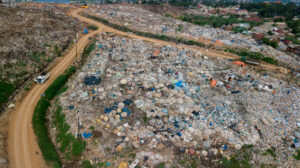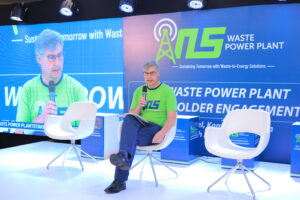Smart City Sweden was in 2021 approached by stakeholders from Kampala regarding the unsustainable waste situation in the capital of Uganda. The next step has now been taken to lay the foundation to make an incineration facility in the city a reality.

The Kiteezi landfill in Kampala
The primary waste disposal facility in Kampala, Kiteezi landfill, has reached its maximum capacity. Landfilling causes big environmental and health problems, as it emits methane and other greenhouse gases and can contaminate water systems through leachate.
NLS Waste Services, a local waste management contractor, was looking for alternative solutions on transforming the waste into value and contacted Smart City Sweden. A series of virtual study visits between Swedish companies and stakeholders in Kampala were organized by Smart City Sweden to show examples of how waste is managed in Sweden. The meetings culminated in a pre-feasibility study for a Waste-to-Energy plant, where Swedish experts visited the Ugandan capital Kampala to evaluate local conditions and support the ambition of NLS to implement a full-scale Waste-to-Energy plant.
Since then, the developer NLS has been granted a permit to carry out the next step, a feasibility study, to further look into the way forward for a Waste-to-Energy plant in Kampala. The study was conducted during 2024 with consultants from Sweden and other countries. Kåre Sundin from Dessie Management AB participated in the initial study and is the Project Director of the feasibility study.

Kåre Sundin, Dessie management
– The Kiteezi dump site is the only place currently where the waste from the city goes, which is about 1300 tons per day. The proposed incineration facility will take the load off Kiteezi while decreasing the climate impact and providing better working and living conditions in the area, among other positive benefits.
The feasibility study will serve as a foundation for an application for the sale of electricity to the national grid. The facility will also produce heat, which will be sold to nearby industries.
– We were contacted by NLS after they had secured the permit needed and we got started at the beginning of 2024 with the feasibility study. We are a big team of about 40 consultants from Sweden, South Africa, Bangladesh, Finland and of course Uganda working on the project.
As part of the study, a Stakeholder Engagement Day was held in April 2024 to discuss the project with the concerned stakeholders.
– It is important to work with lots of actors such as authorities, the responsible actors in the waste value chain, citizens and others. We will put up a visitors’ centre to inform the citizens about the project and how it is proceeding. We also hope for a collaboration with the university.
A challenge is the increased cost of taking care of the waste in the facility instead of dumping it at the Kiteezi dump site.
– This is not just a power project, it is also a waste project and climate project, which will significantly reduce the environmental impact and create a healthier city for the people in Kampala. This is not the whole solution for the waste and environmental issues of Kampala, but it is a great start, Kåre concludes.
The next steps for the project in the coming months are to carry out the Environmental and Social Impact Assessment, strategize the financing and prepare the procurement of the contractor.